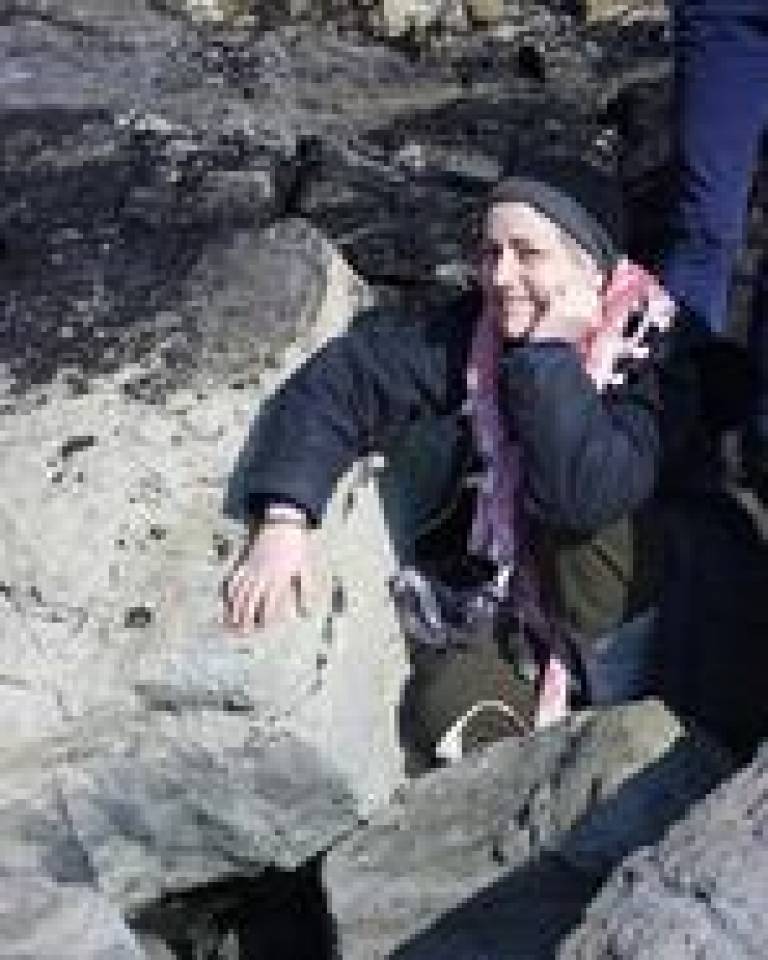The Isle of Skye turtle fossils discovery
21 November 2008
by Professor Susan Evans, UCL Cell and Developmental BiologyThe Middle Jurassic (c.
 164 million years ago) is a poorly known period in our knowledge of small animals like mammals, lizards, frogs, salamanders, turtles etc. Britain is actually one of only a few places that has yielded information from this period, and given us much of what we know. UCL has been particularly involved with a locality at Kirtlington in Oxfordshire, but rich though this is, it produces only disarticulated material.
164 million years ago) is a poorly known period in our knowledge of small animals like mammals, lizards, frogs, salamanders, turtles etc. Britain is actually one of only a few places that has yielded information from this period, and given us much of what we know. UCL has been particularly involved with a locality at Kirtlington in Oxfordshire, but rich though this is, it produces only disarticulated material. The Middle Jurassic deposits on the Isle of Skye were first recognised by geology field parties from Stowe School in Buckinghamshire. It was Dr Michael Waldman, then of Stowe, who first took me to the locality and asked me to work with him on material he had collected. It was clear that the Skye fossil assemblage was very similar to that of the English localities with an important exception, and that was that rare articulated skeletons came out of Skye. The species name of the new turtle - waldmani - recognises Mike's contribution.
Cladach-a-Ghlinne is a difficult site to work (you have to walk in through a bog or along a cliff path for about an hour). It is on the coast, with black bone in grey rock that becomes black when wet. Nonetheless, it is very important. For this reason I submitted a proposal, in collaboration with Dr Paul Barrett at the NHM and Dr Jason Hilton, then of the National Museums of Scotland, to National Geographic for funding to take a large field party to Skye with proper equipment (eg cutting tools). The site is protected (SSSM) so we had to get permission (from Scottish Natural Heritage and the John Muir Trust) to work there; we are also restricted to collecting from the beach not the rock face itself.
We went in Spring 2004 for four weeks, taking researchers and students from UCL, NHM, Cambridge, Birmingham and the National Museums of Scotland. The weather was mostly dreadful - sheeting rain and cold. Nonetheless, we had a very successful trip. The turtle material described by Jérémy was all found by my then PhD student, now postdoc, Marc Jones - in a very large boulder. Collecting the specimens from the rock on the last day, in a fierce rainstorm, with the sea up to their knees - needed the heroic efforts of the field crew (I was in the hotel by the fire cataloguing and wrapping specimens), who then had to carry it all the way back to the vehicles.
Bearing in mind the importance of the material, Paul Barrett and I decided that the best option was a focused study as the core of a PhD research project. We chose Jérémy Anquetin as an exceptional candidate and he has spent the last three years working on it. With the help of the preparators at the Natural History Museum, it took more than a year to prepare out. He found that instead of two turtles as we originally thought, there are actually 5-6 specimens. Moreover, they not only have shells - as do many fossil turtles - but also skulls. This is therefore a very important specimen. Once prepared, it then had to be described, interpreted, and compared with the few other turtles of this age that exist around the world.
The turtle is shown to be a basal form that provides information about the transition in, for example, skull structure. However, as the Skye fossil assemblage is that of a freshwater lagoonal community (including salamanders, aquatic reptiles, fish), the turtle also provides the first confirmed record of an aquatic lifestyle for this group (a lifestyle that is now very common).
Jérémy is currently in France - finishing his thesis and doing some university teaching, while enjoying his newborn baby daughter. Other material from the Cladach-a-Ghlinne locality is under study at UCL and the NHM, and we are continuing to monitor the locality to check for new rock falls onto the beach.
However, this is only one of many projects in our lab. We are currently working on fossil material from China, Japan, Australia, America, New Zealand and other parts of Europe, as well as collaborating with colleagues at the universities of Hull and York on biomechanical modelling of reptile skulls (BBSRC funded) in order to understand their structural evolution.
(Click here to read the UCL news article 'Jurassic turtles could swim' from 19 November.)
 Close
Close

